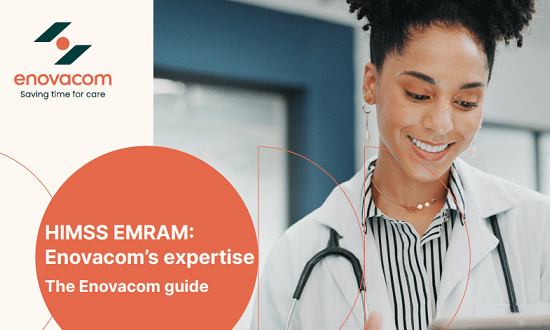Executive focus
- 18 June 2014

Chief information officers in US hospitals are often vice presidents or senior vice presidents, controlling massive budgets, managing large staffs, and reporting directly to the chief executive. It hasn't always been that way.
The healthcare CIO job as we know it today came about perhaps a quarter of a century ago. In the 1980s, the people who would become the first wave of hospital CIOs were IT directors, without any executive authority. "We worried more about the bits and bytes," recalls Charles Christian, vice president and CIO of St Francis Hospital in Columbus, Georgia.
From the data centre to the C-suite
Even earlier, in the 1970s, the head of data processing typically reported to the chief financial officer, since most hospital information systems were focused on billing and administration rather than patient records, adds Richard Rydell.
He led the implementation of the first computerised physician order entry – or CPOE – system at El Camino Hospital in California's Silicon Valley in the early part of that decade. "Our main goal was to become more of a middle management position," Rydell says. Having an office in the executive suite was barely a pipe dream.
Rydell went to Baystate Medical Center in Massachusetts in 1982, where his boss asked him to be CIO, in a post that put him above the director of data processing. But that was rare a rare move at the time.
It was even rarer when John Gall recruited Rydell to El Camino a decade earlier. Gall had worked with defence, aerospace and information-processing giant Lockheed to custom-build a hospital information system for El Camino starting in 1965.
(Technicon Data Systems purchased the technology in 1971. Technicon evolved into electronic health records vendor Eclipsys, which merged with Allscripts Healthcare Solutions in 2010.)
"The first true CIO really was John Gall," says Rydell, who now is chief executive of the Association of Medical Directors of Information Systems, a group of chief medical information officers. In 1989, the precursor organisation to the Healthcare Information and Management Systems Society named its CIO of the Year award after Gall; and made Gall himself the first honouree.
Adding business acumen to IT acumen
Even so, it was not until the end of the '80s and into the '90s that a critical mass of CIOs started to take on more of a strategic role within their hospitals. "Healthcare was a little slower in picking up the position than other industries," Christian says.
In 1992, Rydell helped establish an organisation for CIOs, namely the College of Healthcare Information Management Executives, which now co-presents the John Gall Award with HIMSS.
"It helped solidify the role of what the healthcare CIO should be doing," says Christian, a past chairman of HIMSS, current CHIME chairman-elect and 2010 John Gall Award winner. "There needed to be a higher-level focus on technology pieces."
In US hospitals today, IT initiatives are tightly integrated into business and strategic plans. "There's been a significant change in attitudes over time," Christian says.
Rydell credits CHIME educational programmes such as the CIO Boot Camp, an intensive, multi-day seminar that imparts leadership skills healthcare CIOs need, with helping to move the job up the organisational chart. "You needed business acumen as well as technology acumen," Rydell says. That remains true today.
CMIOs are coming up on the rails
CIOs are now direct reports to the CEO or at least the chief operating officer. In larger organisations, they often oversee chief technology officers and chief information security officers, and have partial authority over CMIOs, who might also report to chief medical officers.
However, more and more CMIOs are finding themselves on equal footing with the CIO. This reflects computing’s move out of accounting and into clinical operations, Rydell suggests.
Back when he first started more than 40 years ago, the "big eight" accounting firms really controlled healthcare finance – and so capital investments – in the US. They were generally against computerising clinical operations.
The typical argument was that computerised patient records, as they were then known, were "too risky" an investment, Rydell says.
As a result, many of the chief medical officers of the era were retired doctors; who often just managed the credentialing of practicing physicians. The CMO was a weak position, and other administrators kept their distance. "You didn't cosy up to the medical staff," Rydell says.
Clinical responsibilities really ramped up starting in 2009, when the US government instituted the EHR incentive programme known as "meaningful use." In the meantime, over the years, "most CIOs just took their existing roles and expanded them," Rydell says.
Creating a position and filling it
Christian is one of those self-made CIOs. His first job in healthcare was as a radiology technician. He long sought ways to automate radiology reports, but for most of his 14 years in his technician role his employer could not afford to do so.
That is how he learned about project management, a central skill for any successful healthcare CIO. "At the end of the day, for me, it's really about process, not technology. Technology is just a tool," Christian says. "I spent a lot of time each day working on relationships.”
Having switched jobs at the beginning of 2013, after holding a similar CIO position at a hospital in Indiana for the previous 23 years, Christian has had to adjust to a new culture – while also selling his management philosophy to people who have been at St Francis far longer than he has.
"My reputation in the industry gave me some credibility," Christian says. "However, my approach is a little bit different from my predecessor's."
Christian likes to take empathetic approach toward management. He asks a lot of questions, but wants his charges to know he is not questioning their work, just trying to understand what they are doing so they are not missing anything. "Part of my job is making sure everybody maintains focus," Christian says.
EHI has created the Health CIO Network to support chief information officers and other, senior information leaders in the NHS. For more information about the network and its activities, visit the dedicated Health CIO Network web pages.




